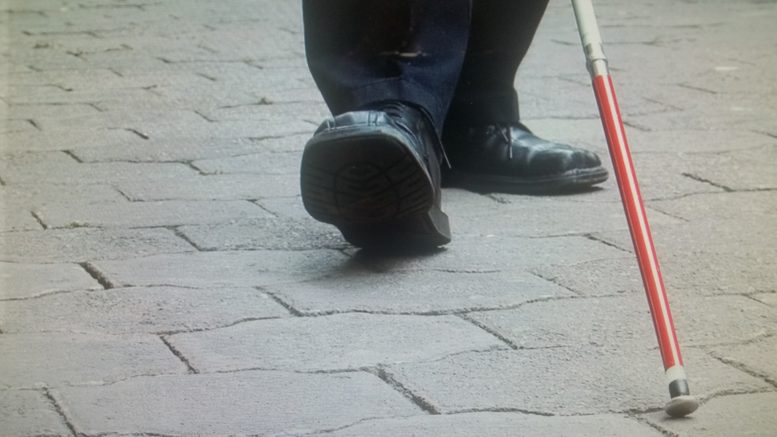By JAN LARSON McLAUGHLIN
BG Independent News
State cuts in services for older adults with vision problems are being called short-sighted by a local agency who serves people in the region with vision impairments.
Adults 55 and older, with mild or moderate vision problems, will no longer be eligible for vision rehabilitation services through Opportunities for Ohioans with Disabilities Independent Living Older Blind program.
That means the services that help adults adapt as their sight fails will no longer be funded.
The Sight Center in Toledo currently helps area residents learn to live independently as their eyesight worsens.
“There’s a transition, and the earlier you can make that transition, the better,” said Tim Tegge, of the Sight Center.
Tegge, of Bowling Green, has lived his entire life with vision problems. People who experience loss of vision later in life are often terrified about the changes they face.
“I see people every day who come in who have the gut punch of losing their sight,” Tegge said.
The three Sight Centers across the state have been a major resource for those people, he added. But less than a month ago, the state OOD “blindsided” the Sight Centers by announcing that older adults with mild and moderate vision problems would no longer qualify for services.
That decision makes no sense, Tegge said, since addressing vision loss early, while people still have some vision, is the best method.
“It’s a missed opportunity,” he said.
Several Wood County residents will be affected by the change. The Sight Center in Toledo historically serves around 40 to 50 Wood County residents per year with clinical services. As many as 75 percent of those people would no longer be eligible for services after the cuts.
The services help people learn such tasks as navigating with a white cane, managing finances, using technology, reading prescriptions and performing other daily living activities.
“How to cook safely without the sight that someone is used to,” he said.
“I think the more quickly someone can make the transition, the better they are going to be,” Tegge said.
Waiting till the person is legally blind is not only more costly, it is also a disservice to the individual, he said.
The services offered by the Sight Center are not ongoing. They are intended to help people live independently. “We help someone learn how to do things so they can do it themselves,” Tegge said.
The program does more than just supply equipment – it gives people hope.
“Hope is one of the things you can help people with,” Tegge said. “And hope is more than a magnifier.”
Tegge recounted the comment made recently by a person seeking help at the Sight Center. “I’m losing my sight and I’m scared to death,” he recalled.
In an attempt to save the program for older adults, the Sight Center notified several state legislators and local media about the changes.
“Having a mission and helping people be independent, it’s hard to not fight for that group of people,” Tegge said.
After being contacted by legislators and media, the OOD announced that it would delay implementation of the changes. And a meeting was scheduled next week with the Sight Centers to address concerns about “perceived gaps in services.”
“OOD remains committed to providing required services to those in the blind community,” the agency’s statement said.
Stacey Butts, executive director of the Sight Center, said the state cuts came as a complete surprise. “Three out of four older adults we serve through this program will no longer be eligible,” Butts said in a statement. “Waiting until someone is legally blind to help them maintain their independence is setting Ohio seniors up for failure and will increase the need for family assistance or home health aides.”
The number of people needing low vision services is growing due to the aging population and health-related conditions, including diabetic retinopathy, the leading cause of permanent vision loss in the country.
Health insurance doesn’t cover the majority of services needed by someone who loses all or part of their vision – not even a white cane and white cane training. Traditional funding sources have been steadily reducing support for services that are not strictly employment related.
“We’ll do everything we can to keep working with people who won’t be eligible for that program,” Tegge said.
In response to the state’s cuts, the Sight Center is seeking community input regarding the state’s changes. Affected individuals, their families and caregivers, eye care professionals, and representatives from organizations serving older adults, are invited to contact Stacey Butts at 419-720-3937 Ext. 103 or sbutts@sightcentertoledo.org. A community forum is also being planned by the Sight Center with details forthcoming.

